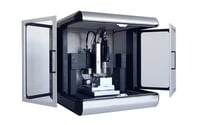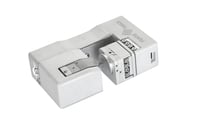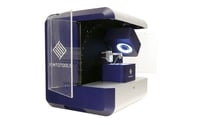FT-MTA03 Mechanical Testing and Assembly System
Versatility and high resolution, optimized for soft materials
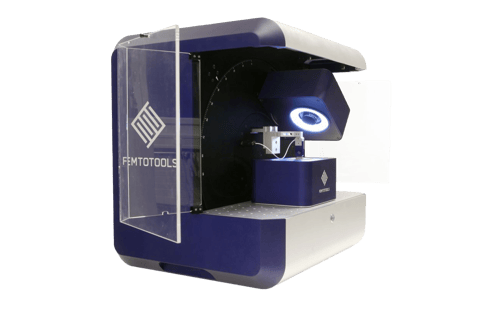
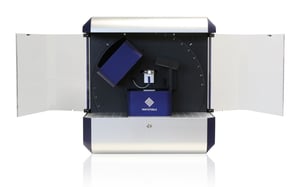
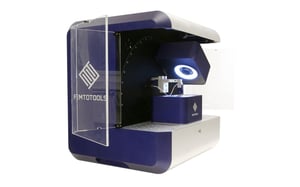
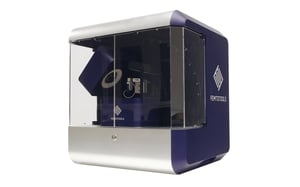
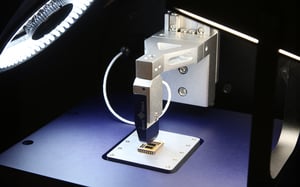
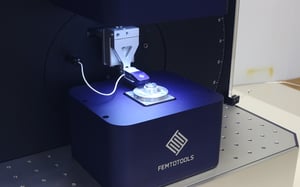
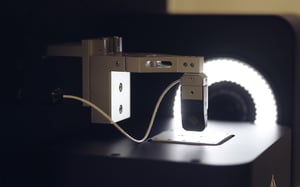
The FT-MTA03 Micromechanical Testing and Assembly System is a versatile tool for accurately quantifying micro- and nanoscale mechanical properties and dimensions.
It integrates the functions of a nanoindenter, micro-tensile tester, stylus profilometer, and microstructural analyzer. Capable of measuring forces within ±200 mN at a 0.5 nN resolution and displacements from 0.1 nm to 29 mm across three axes, it suits a wide range of applications.
The system is customizable for various testing orientations and equipped with FemtoTools FT-S Microforce Sensing Probes for precise force measurements. It also supports microassembly and sample preparation with FT-G Microgrippers, making it a comprehensive solution for microstructural analysis.
Lorem ipsum dolor sit amet, consetetur sadipscing elitr, sed diam nonumy eirmod tempor invidunt ut labore et dolore magna aliquyam erat, sed diam voluptua. At vero eos et accusam et justo duo dolores-
At vero eos et accusam et justo duo dolores et ea rebum. Stet clita kasd gubergren, no sea takimata sanctus est Lorem ipsum dolor sit amet. Lorem ipsum dolor sit amet, consetetur sadipscing elitr, sed diam nonumy eirmod tempor invidunt ut labore et dolore magna aliquyam erat.
Stet clita kasd gubergren, no sea takimata sanctus est Lorem ipsum dolor sit amet. Lorem ipsum dolor sit amet, consetetur sadipscing elitr, sed diam nonumy eirmod tempor invidunt ut labore et dolore.
Key Features
- 01 Unmatched Flexibility
- 02 Sideview Microscope
- 03 Unmatched Force Resolution
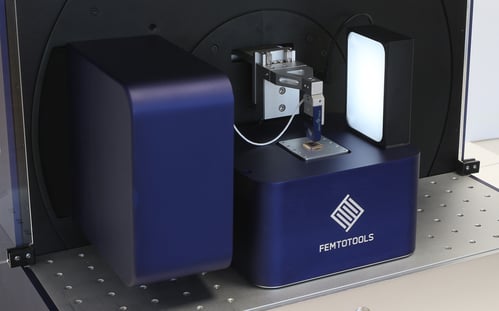
The flexible design of the FT-MTA03 makes any type of micromechanical test easy, from nanoindentation, scratch, dynamic mechanical analysis, fatigue, or even testing in liquids. Furthermore, its incredible force-sensing range from 500 pN to 200 mN, allows testing of materials from hard ceramics to soft hydrogels.
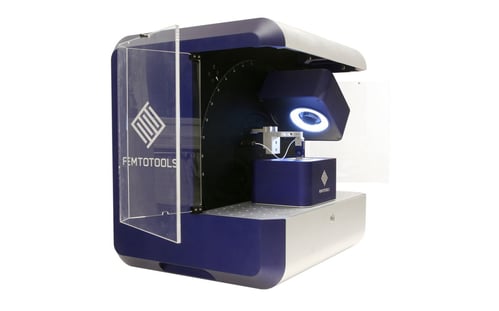
With its tiltable microscope, the FT-MTA03 enables the simultaneous observation and mechanical testing of microscale samples over 180°. This makes it possible to obliquely observe the behavior of the sample while it is being deformed.
|
180° |
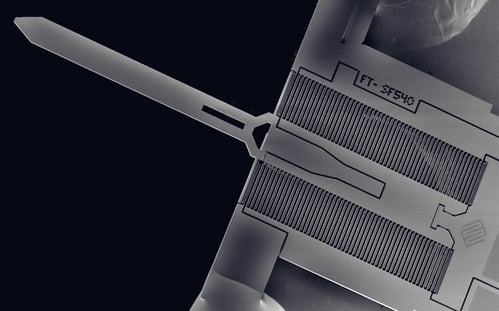
Micro-Electro-Mechanical System (MEMS)-based force sensors exhibit an unmatched dynamic range of up to 100 kHz, thanks to their exceptionally small mobile mass and high stiffness. Moreover, the small fabrication tolerances of MEMS allow for achieving the lowest possible noise floor, reaching down to 500 pN.
|
Down to 500 pN |
Testing modes

Soft Materials Testing
Polymers, metamaterials, or bio-inspired materials are critical for modern technologies. Analysis of these soft materials requires systems capable of both large displacements and high force resolution.
READ MORE ->
Read More
Nanoindentation
Nanoindentation assesses the local mechanical behavior of a material by pressing a sharp tip into its surface and measuring the force needed to create an indent. This technique measures local mechanical properties (including hardness, elastic modulus, strain rate sensitivity, and others) directly from the material's response.
READ MORE ->
Read More
MEMS Mechanical Testing
For micro-manufacturing development, multiple parameters impact the mechanical properties of MEMS structures. The MTA03 measures stiffness in two orientations, enabling an easy yield rate calculation by identifying functional and defective components.
READ MORE ->
Read More
Mechanical Microscopy
Nanoindentation mapping, or mechanical microscopy, employs a nanoindenter in a microscope-like manner. It enables the mapping of mechanical properties of intricate microstructures in minutes, thanks to the integration of rapid indentation speeds and precise spatial resolution.
READ MORE ->
Read More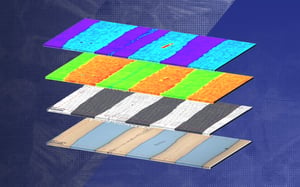
Correlative Mechanical Microscopy
Correlative mechanical microscopy merges nanoindentation with additional microscopy methods. This integration of various data layers enables precise phase identification by including elemental or crystallographic analysis in the mechanical measurement.
READ MORE ->
Read More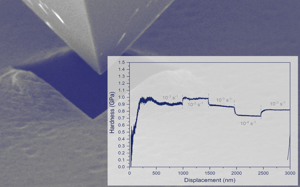
Strain-Rate Control
Time, like temperature, is a key parameter for materials deformation. Speed determines the active deformation mechanism. Strain-rate control during testing achieves the most consistent results and allows exploring the material's response from creep to impact, even within a single indent.
READ MORE ->
Read More
High-Temperature Testing
High-temperature nanoindentation tests materials at elevated temperatures. It is crucial for assessing mechanical properties in operando or under conditions close to their target application. By precisely controlling the temperature of the indenter tip and the sample holder, thermal drifts are reduced to record-low levels.
READ MORE ->
Read More
Scratch Testing
Scratch is a critical method for assessing materials’ adhesion, hardness, and resistance to wear - especially for coatings. It provides quantitative data on material durability and performance by scribing a hard tip across the surface and measuring the required force and the resulting topography.
READ MORE ->
Read MoreAccessories
- 01 Microforce Sensing Probes
- 02 Two-Axis Microforce Probe
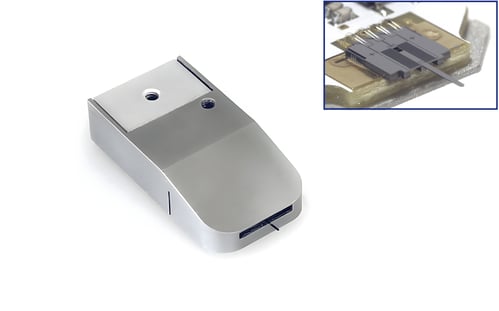
FT-S
Microforce Sensing Probes
The FT-S Microforce Sensing Probes are sensors capable of measuring forces from sub-nanonewton to 2 newtons along the sensor’s probe axis. They are available with a wide variety of tip materials and geometries, including diamond Berkovich, cube corner, flat punch, wedge, conical, and more. Specialized versions, featuring 2-axis force sensing or tip heating, are also available.
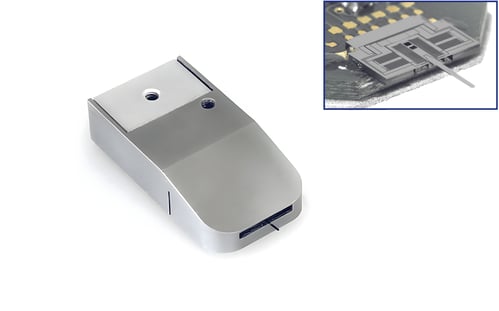
FT-S
Two-Axis Microforce Sensing Probe
The FT-S Two-Axis Microforce Sensing Probes are Micro-Electro Mechanical Systems (MEMS) based multi-axis microforce sensors capable of simultaneous measuring forces in the two in-plane directions. The primary application for these sensors is nano-scratch, nano-tribology and nano-wear testing.
D. Kou, L. Gao, R. Lin, S. Zhang, and W. Ma, ‘Hydrogen Bond‐Mediated Self‐Shielded Moisture‐Responsive Structural Color for Time‐Temperature Indicating’, Advanced Science, p. 2310060, Feb. 2024, doi: 10.1002/advs.202310060.
E. Istif, M. Ali, E. Y. Ozuaciksoz, Y. Morova, and L. Beker, ‘Near-Infrared Triggered Degradation for Transient Electronics’, ACS Omega, vol. 9, no. 2, pp. 2528–2535, Jan. 2024, doi: 10.1021/acsomega.3c07203.
C. Zhao et al., ‘Multi-scale alignment in highly piezoelectric polyacrylonitrile nanofibers separator for advanced self-charging supercapacitor’, Nano Energy, vol. 116, p. 108812, 2023.
X. Zhang and J. Weickenmeier, ‘Brain Stiffness Follows Cuprizone-Induced Variations in Local Myelin Content’, Acta Biomaterialia, vol. 170, pp. 507–518, 2023.
G. Yamada, Y. Morita, K. Terao, F. Shimokawa, and H. Takao, ‘High Resolution Tactile Sensor for Measurement of a Complicated Tactile Feeling of" Shittori" With Moistness’, in 2023 IEEE 36th International Conference on Micro Electro Mechanical Systems (MEMS), IEEE, 2023, pp. 213–216. Accessed: Mar. 22, 2024.
W. Wu et al., ‘Micronewton shear rheometer performing SAOS using 2 mg of sample’, Journal of Rheology, vol. 67, no. 1, pp. 207–218, 2023.
R. C. Voicu, C. Tibeica, M. Pustan, and C. Birleanu, ‘A Study for Two Microgrippers with Integrated Piezoresistive Force/Displacement Sensors’, in 2023 International Conference on Manipulation, Automation and Robotics at Small Scales (MARSS), IEEE, 2023, pp. 1–6. Accessed: Mar. 22, 2024.
Y. Tang, H. E. Symons, P. Gobbo, J. S. Van Duijneveldt, I. Hamerton, and S. Rochat, ‘Properties and Curing Kinetics of a Processable Binary Benzoxazine Blend’, ACS Appl. Polym. Mater., vol. 5, no. 12, pp. 10404–10415, Dec. 2023, doi: 10.1021/acsapm.3c02221.
S. Z. Pakzad, B. Ali, S. B. Coban, M. Karimzadehkhouei, and B. E. Alaca, ‘Innovative MEMS Stage for Automated Micromechanical Testing’, in 2023 International Conference on Manipulation, Automation and Robotics at Small Scales (MARSS), IEEE, 2023, pp. 1–6. Accessed: Mar. 22, 2024.
J. Li, S. Yang, L. Zhang, X. Dong, G. Shi, and J. Zhang, ‘Molecular dynamics simulation and experimental study on nanoindentation response of polycrystalline γ-TiAl alloy’, Appl. Phys. A, vol. 129, no. 12, p. 846, Dec. 2023, doi: 10.1007/s00339-023-07100-3.
P. Giolando et al., ‘AI-dente: an open machine learning based tool to interpret nano-indentation data of soft tissues and materials’, Soft Matter, vol. 19, no. 35, pp. 6710–6720, 2023.
J. L. Fredricks, ‘Understanding Processing-Structure-Mechanical Property Relationships in Sustainable Biopolymer-Based Composites Using Design of Experiments and Machine Learning’, PhD Thesis, University of Washington, 2023. Accessed: Mar. 22, 2024.
M. Ali, E. Istif, M. J. Bathaei, and L. Beker, ‘Investigation of dynamic micromechanical properties of biodegradable elastic material by continuous stiffness measurement analysis’, Journal of Elastomers & Plastics, vol. 55, no. 7, pp. 1111–1122, Nov. 2023, doi: 10.1177/00952443231196278.
E. Vassiliadi et al., ‘(Hydroxypropyl) methyl Cellulose-Chitosan Film as a Matrix for Lipase Immobilization—Part II: Structural Studies’, Gels, vol. 8, no. 9, p. 595, 2022.
H. E. Symons, A. Galanti, J. C. Surmon, R. S. Trask, S. Rochat, and P. Gobbo, ‘Automated analysis of soft material microindentation’, Soft Matter, vol. 18, no. 43, pp. 8302–8314, 2022.
M. Komatsubara, T. Nakashima, K. Terao, F. Shimokawa, Y. Matsui, and H. Takao, ‘Development of a Minimally Invasive High-Resolution Tactile Sensor For Acquiring Delicate Haptic Changes in Hair’, in 2022 IEEE 35th International Conference on Micro Electro Mechanical Systems Conference (MEMS), IEEE, 2022, pp. 699–702. Accessed: Mar. 22, 2024.
H. Iyer, Effects of Thermomechanical Processing Conditions on the Morphology and Mechanical Properties of Spirulina Bioplastics. University of Washington, 2022. Accessed: Mar. 22, 2024.
D. He, D. A. Kim, D. N. Ku, and Y. Hu, ‘Viscoporoelasticity of coagulation blood clots’, Extreme Mechanics Letters, vol. 56, p. 101859, 2022.
L. Escutia-Guadarrama, D. Morales, D. Pérez-Calixto, and G. Burillo, ‘Development of Polyphenol-Functionalized Gelatin-Poly (vinylpyrrolidone) IPN for Potential Biomedical Applications’, Polymers, vol. 14, no. 21, p. 4705, 2022.
C. Duverney, M. A. El Bahi, N. Gerig, P. C. Cattin, and G. Rauter, ‘Development and Evaluation of a Force-Sensitive Flexure-Based Microgripper Concept’, in New Trends in Medical and Service Robotics, vol. 106, G. Rauter, G. Carbone, P. C. Cattin, A. Zam, D. Pisla, and R. Riener, Eds., in Mechanisms and Machine Science, vol. 106. , Cham: Springer International Publishing, 2022, pp. 97–106. doi: 10.1007/978-3-030-76147-9_11.
P. C. Cattin and G. Rauter, ‘Development and Evaluation of a Force-Sensitive Flexure-Based Microgripper Concept’, New Trends in Medical and Service Robotics: MESROB 2021, vol. 106, p. 97, 2022.
D. Pérez-Calixto, S. Amat-Shapiro, D. Zamarrón-Hernández, G. Vázquez-Victorio, P.-H. Puech, and M. Hautefeuille, ‘Determination by relaxation tests of the mechanical properties of soft polyacrylamide gels made for mechanobiology studies’, Polymers, vol. 13, no. 4, p. 629, 2021.
L. Peng et al., ‘High-precision detection of ordinary sound by electrospun polyacrylonitrile nanofibers’, Journal of Materials Chemistry C, vol. 9, no. 10, pp. 3477–3485, 2021.
H. Oka, K. Terao, F. Shimokawa, and H. Takao, ‘An Antenna-Shaped MEMS Tactile Sensor with Angle Detection Capability’, in 2021 IEEE 34th International Conference on Micro Electro Mechanical Systems (MEMS), IEEE, 2021, pp. 139–142. Accessed: Mar. 22, 2024.
Y. Lai and Y. Hu, ‘The relation between adhesion properties and network properties of hydrogels: A study based on an indentation adhesion method’, Mechanics of Materials, vol. 159, p. 103877, 2021.
A. D. Inthavong, Effects of CNTs in polymer nanocomposite pillars fabricated through Two-Photon Polymerization. University of Washington, 2021. Accessed: Mar. 22, 2024.
P. D. Haasbroek, ‘Role of extracellular environment in mechanical properties of human cardiac fibroblasts and myofibroblasts’, 2021.
F. C. D. M. CELULARES, ‘Posgrado en Ciencia e Ingeniería de Materiales Facultad de Ciencias’, PhD Thesis, INSTITUTO DE INVESTIGACIONES EN MATERIALES, 2021. Accessed: Mar. 22, 2024.
H. Takao, ‘Post-CMOS Compatible Silicon MEMS Nano-Tactile Sensor for Touch Feeling Discrimination of Materials’, ECS Transactions, vol. 97, no. 5, p. 79, 2020.
C. B. Schindler, H. C. Gomez, D. Acker-James, D. Teal, W. Li, and K. S. Pister, ‘15 millinewton force, 1 millimeter displacement, low-power MEMS gripper’, in 2020 IEEE 33rd International Conference on Micro Electro Mechanical Systems (MEMS), IEEE, 2020, pp. 485–488. Accessed: Mar. 22, 2024.
Y. Maeda, K. Terao, F. Shimokawa, and H. Takao, ‘Structural color based tactile sensor for flexible endoscopic surgery to detect grab state and organs hardness’, in 2020 IEEE 33rd International Conference on Micro Electro Mechanical Systems (MEMS), IEEE, 2020, pp. 689–692. Accessed: Mar. 22, 2024.
Y. Lai, ‘Characterizing the mechanical, transport and adhesion properties of hydrogels using indentation method’, PhD Thesis, Georgia Institute of Technology, 2020. Accessed: Mar. 22, 2024.
濱本晃輝, 寺尾京平, 下川房男, and 高尾英邦, ‘毛包細胞の機能を模した高感度 MEMS シリコン毛デバイス’, 電気学会論文誌 E (センサ・マイクロマシン部門誌), vol. 139, no. 7, pp. 180–185, 2019.
C. Zhang, R. Grossier, L. Lacaria, F. Rico, N. Candoni, and S. Veesler, ‘Development of a microfluidic method for preparing monodispersed microparticles with controllable sizes and mechanical properties’, 2019.
K. Watatani, K. Terao, F. Shimokawa, and H. Takao, ‘A Monolithic Fingerprint-Like Tactile Sensor Array Realizaing High Resolution Imaging of Spatially Distributed Tactile Information’, in 2019 IEEE 32nd International Conference on Micro Electro Mechanical Systems (MEMS), IEEE, 2019, pp. 182–185. Accessed: Mar. 22, 2024.
T. Nakashima, K. Watatani, K. Terao, F. Shimokawa, and H. Takao, ‘A 0.1 μM-Resoution Silicon Tactile Sensor with Precisely Designed Piezoresitve Sensing Structure’, in 2019 20th International Conference on Solid-State Sensors, Actuators and Microsystems & Eurosensors XXXIII (TRANSDUCERS & EUROSENSORS XXXIII), IEEE, 2019, pp. 1807–1810. Accessed: Mar. 22, 2024.
Y. Lai, D. He, and Y. Hu, ‘Indentation adhesion of hydrogels over a wide range of length and time scales’, Extreme Mechanics Letters, vol. 31, p. 100540, 2019.
K. Hamamoto, K. Terao, F. Shimokawa, and H. Takao, ‘A Highly Sensitive Planer Silicon-Hair Device Reproducing the Function of Human Hair Follicle’, in 2019 IEEE 32nd International Conference on Micro Electro Mechanical Systems (MEMS), IEEE, 2019, pp. 198–201. Accessed: Mar. 22, 2024.
K. Hamamoto, K. Terao, F. Shimokawa, and H. Takao, ‘A highly sensitive MEMS silicon‐hair device reproducing the function of hair follicle’, Elect Comm in Japan, vol. 102, no. 10, pp. 50–56, Oct. 2019, doi: 10.1002/ecj.12211.
S. J. H. DOMÍNGUEZ, ‘Posgrado en Ciencia e Ingenierıa de Materiales’, PhD Thesis, Instituto de Investigaciones en Materiales, 2019. Accessed: Mar. 22, 2024.
B. Díaz-Bello et al., ‘Method for the Direct Fabrication of Polyacrylamide Hydrogels with Controlled Stiffness in Polystyrene Multiwell Plates for Mechanobiology Assays’, ACS Biomater. Sci. Eng., vol. 5, no. 9, pp. 4219–4227, Sep. 2019, doi: 10.1021/acsbiomaterials.9b00988.
K. Ando et al., ‘Highly sensitive silicon slip sensing imager for forceps grippers used under low friction condition’, in 2019 IEEE International Electron Devices Meeting (IEDM), IEEE, 2019, pp. 18–2. Accessed: Mar. 22, 2024.
.png?width=184&height=50&name=Logo1_CMYK%201%20(1).png)
